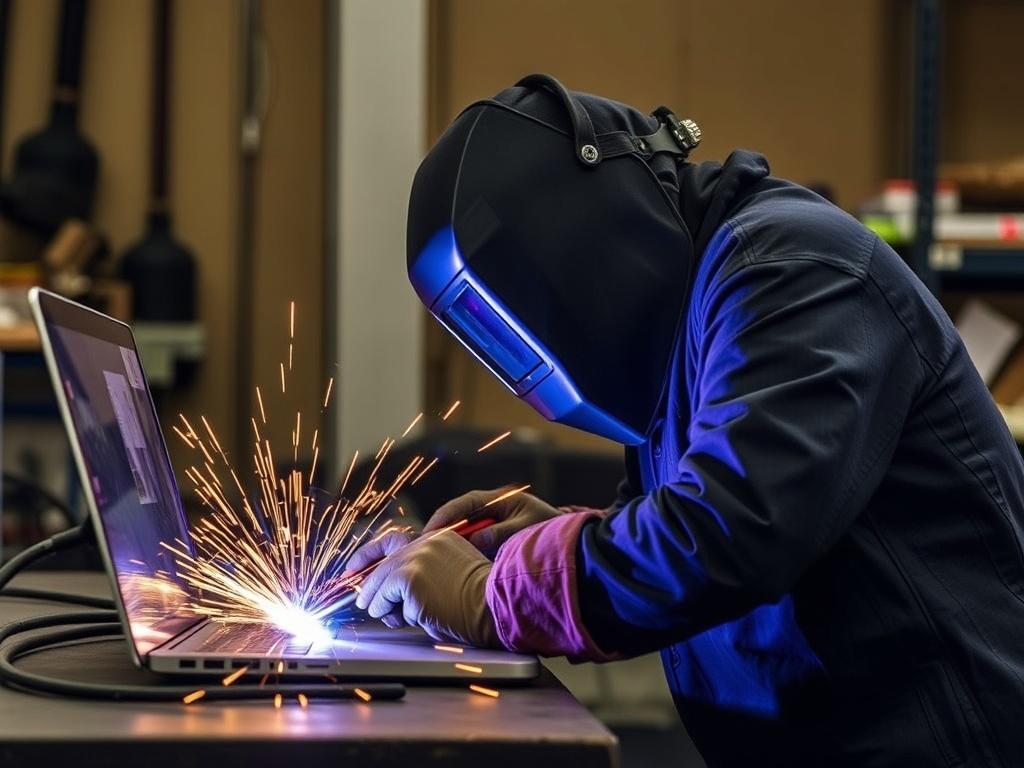
In today’s fast-paced digital world, many traditional skills are finding new life through online learning platforms. Welding, historically a hands-on profession that requires skill, precision, and physical training, is no exception. The question on many aspiring welders’ minds is: Are online welding courses really worth it? This comprehensive article dives deep into the world of online welding education, exploring everything from course quality to career prospects and practical skills development.
What Are Online Welding Courses?
Before we discuss their value, it’s important to understand what online welding courses actually offer. At a glance, online welding courses combine digital learning modules with some form of practical training, usually conducted either at local partner institutions or at home with portable equipment.
These courses typically provide:
- Video tutorials demonstrating techniques and tools
- Interactive quizzes to assess knowledge
- Virtual simulations of welding processes
- Forums or chat groups for peer and instructor interaction
- Guidance on safety practices and materials
Online welding courses may also partner with local welding shops or use at-home welding kits to provide the necessary hands-on experience essential to mastering the craft.
How Does Traditional Welding Training Compare to Online Learning?
Traditionally, welding training has been conducted through in-person vocational schools or community colleges, where students get immediate hands-on experience with equipment under the supervision of a skilled instructor. The value of face-to-face training is evident, especially considering the physical nature of the welding trade. The tactile feedback, firsthand corrections, and instant guidance make it easier for many students to grasp complex welding techniques.
However, traditional training often involves significant time commitments, travel, and tuition fees, which might not be feasible for everyone. This is where online welding courses attempt to bridge the gap by offering a flexible learning schedule and a potentially lower cost.
| Aspect | Traditional Welding Training | Online Welding Courses |
|---|---|---|
| Learning Method | In-person hands-on instruction | Digital modules, video demos, simulations |
| Flexibility | Fixed schedule | Self-paced or scheduled online classes |
| Cost | Higher tuition and materials fees | Typically lower, with option for equipment rental/purchase |
| Hands-on Experience | Immediate supervision and feedback | Supplemented by simulations or at-home practice |
| Networking | Direct interaction with instructors and peers | Online forums and virtual interaction |
Is Hands-On Training Possible in an Online Format?
The biggest skepticism for online welding courses centers on the ability to gain adequate hands-on practice. Welding is a skill developed through direct manipulation, feel, and real-time adjustments. No video or virtual simulation can fully replicate that experience. Nevertheless, the industry has started to innovate with hybrid models.
Many reliable online welding courses now offer partnerships with local technical schools or welding shops, where students can complete in-person labs while doing the theoretical portion online. Some courses also provide welding kits you can buy or rent, which include safety gear and basic tools, allowing you to practice at home under virtual guidance.
This blended approach aims to capture the advantages of digital learning without sacrificing the critical component of hands-on experience. While it’s not perfect for beginners who need close supervision, it offers flexibility and accessibility for many learners.
Benefits of Taking Online Welding Courses
There’s no denying that online welding courses have grown in popularity for several reasons. For many people, the benefits outweigh the challenges, making online welding education an attractive option.
1. Flexibility to Learn at Your Own Pace
One of the best parts about online welding courses is that you set the pace. Whether you’re balancing a full-time job or family responsibilities, you can log on whenever it works for you. This is a game-changer, especially for those who can’t attend regular classes.
2. Lower Cost Compared to Traditional Programs
Typically, online welding courses are less expensive than attending a full vocational program. You’ll save on commuting, accommodation, and sometimes even equipment costs. While you might need to invest later in welding tools for practice, the initial course fee is generally more affordable.
3. Access to a Broad Range of Courses and Specializations
The internet offers an incredible variety of courses focusing on different types of welding such as MIG, TIG, Stick welding, and even advanced topics like underwater welding or aerospace welding. This diversity allows you to explore, choose, and specialize according to your interest and career goals.
4. Enhances Theoretical Knowledge with Interactive Content
Online courses often include video demonstrations, quizzes, and animations which make complicated concepts easier to understand. This can be especially helpful for beginners who want to strengthen their foundation before jumping into hands-on work.
5. Prepares Aspirants for Certifications
Many online welding courses are designed to help students prepare for certification exams, such as the American Welding Society (AWS) Certified Welder program. These certifications are crucial for gaining employment in the welding industry.
Potential Downsides and Challenges of Online Welding Courses
Although online welding courses come with many advantages, they also have notable downsides. Understanding these challenges will help you make an informed decision.
1. Limited Hands-On Experience Without Local Partnerships
The biggest drawback is the potential lack of practical welding time if the course doesn’t offer local labs or equipment. Without real welding practice, it’s difficult to master nuances like welding technique, angle, pressure, and bead appearance.
2. Requires Self-Discipline and Motivation
Online courses demand a high level of self-motivation. Without direct supervision, it’s easy to procrastinate or skip important practice drills which can hinder your progress.
3. Equipment Costs and Safety Concerns
If you opt to practice welding at home, you’ll need to purchase or rent proper welding machines and safety gear, which can get expensive. Moreover, safety concerns arise without professional oversight, increasing the risk of accidents or improper techniques.
4. Variable Course Quality
Because the industry is still evolving, many online welding courses differ significantly in quality and comprehensiveness. It’s important to select courses that are accredited or recommended by industry professionals.
Key Features to Look for in a Quality Online Welding Course
If you decide to explore online welding courses, here are some essential features to keep in mind to ensure you get value for your investment:
- Accreditation and Certification – Check if the course is recognized by established welding or vocational institutions, such as the AWS.
- Hands-On Practice Opportunities – Does the course offer in-person labs, rental kits, or local partnerships for physical practice?
- Experienced Instructors – Look for courses taught by industry veterans with verifiable credentials.
- Comprehensive Curriculum – Ensure the course covers theoretical knowledge, techniques, safety, tools, and certifications preparation.
- Student Support and Community – Is there access to forums, tutoring, or mentorship to guide you?
- Flexible Scheduling – Can you progress at your own pace while still meeting any deadlines for practice or tests?
Popular Platforms Offering Online Welding Courses

For those curious about the options currently available, here are some well-known platforms and programs offering online welding courses or hybrid models:
| Platform/Program | Course Features | Pricing | Hands-On Practice |
|---|---|---|---|
| LINCOLN ELECTRIC Virtual Welding School | Simulations, video tutorials, and certifications prep | Varies by course (generally mid-range) | Partnered with local shops for applied practice |
| Udemy Welding Courses | Various beginner to advanced courses, video-based | Low-cost, frequent discounts available | Home practice possible with equipment purchase |
| American Welding Society (AWS) Online Learning | Targeted certification prep and theory courses | Moderate, focused on professionals | In-person welding test required for certification |
| Welding Academy Virtual Classes | Hybrid model with virtual theory and in-person labs | Higher cost, comparable to vocational schools | In-person labs mandatory |
Career Prospects After Completing Online Welding Courses

The burning question is: Do online welding courses open doors to real-world jobs? The answer depends on several factors, including your practical skills, certifications, experience, and the reputation of your training program.
Employers in the welding industry prioritize practical ability and certified skills above all else. Completing an online welding course plus achieving an accredited certification can increase your chances of landing entry-level welding jobs. However, you will likely need to supplement online learning with some on-the-job training or apprenticeships to become competitive.
Welders are in demand in various industries such as construction, manufacturing, shipbuilding, automotive, and energy sectors. The versatility of welding skills makes it a resilient and rewarding career path.
Steps to Boost Your Welding Career After Online Training
- Get Certified. Aim to pass certification exams from recognized bodies such as AWS.
- Gain Hands-On Experience. Seek apprenticeships, internships, or part-time roles to hone physical skills.
- Build a Portfolio. Document your work with photos and testimonials.
- Keep Learning. Welding technologies change; continue to take advanced courses online or offline.
- Network. Join welding associations and online communities to find job opportunities.
Frequently Asked Questions (FAQs) About Online Welding Courses

Q1: Can absolute beginners learn welding online?
Yes, beginners can start with online theoretical courses to understand terminology, tools, and safety. However, hands-on practice is necessary to truly master welding techniques.
Q2: Are online welding certifications recognized by employers?
Certifications from reputable organizations like American Welding Society are widely recognized. Simply completing an online course without certification won’t carry the same weight.
Q3: How much does a quality online welding course cost?
Costs vary widely, from under $100 for basic Udemy classes to several thousand dollars for comprehensive hybrid programs that include in-person practice.
Q4: What equipment do I need for practicing welding at home?
Basic welding machines (MIG, TIG, or Stick), protective gear (helmet, gloves, apron), and a well-ventilated workspace are essential. Costs for equipment vary depending on the welding type.
Q5: How long does it take to complete online welding courses?
Duration can range from a few weeks for introductory courses to several months for certification prep and advanced training. Most courses allow self-paced learning.
Final Verdict: Are Online Welding Courses Worth It?
Online welding courses are a valuable resource—especially for individuals seeking flexible, affordable, and accessible education in welding theory and technique. They open doors for people who otherwise might not access formal education due to time, location, or financial constraints.
However, excellent hands-on welding skills, which employers prize, cannot be developed through online learning alone. Courses that offer hybrid models with in-person labs, or strategies to practice welding safely at home, provide the best of both worlds.
For motivated learners who combine online courses with real-world practice and pursue industry certifications, online welding courses are not only worth it—they can be a significant stepping stone to a rewarding welding career.
If you’re considering a welding career but are unsure about the best learning path, online welding courses paired with real-world practice and certification prep could be the solution you’re looking for.
Additional Resources
- American Welding Society (AWS) – Certification and educational resources
- Lincoln Electric Virtual Welding School
- Udemy Welding Courses
- OSHA Welding Safety Guidelines
Ready to light the spark and forge your future? Exploring online welding courses could be your first step toward shaping a metal career path full of opportunity and skill.
